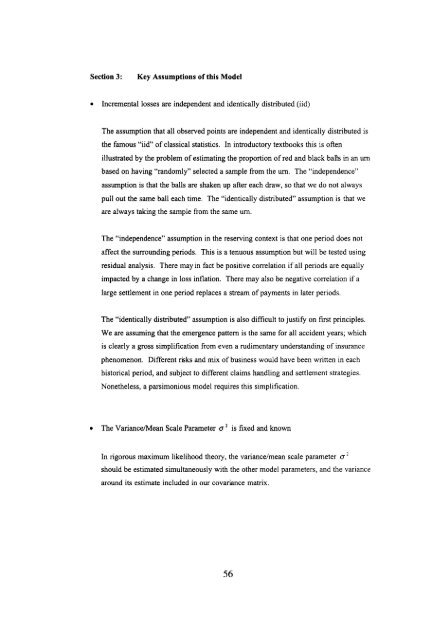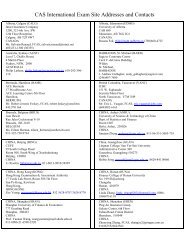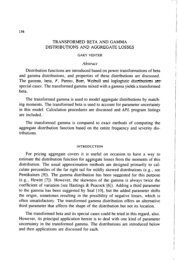LDF Curve-Fitting and Stochastic Reserving: A Maximum Likelihood ...
LDF Curve-Fitting and Stochastic Reserving: A Maximum Likelihood ...
LDF Curve-Fitting and Stochastic Reserving: A Maximum Likelihood ...
You also want an ePaper? Increase the reach of your titles
YUMPU automatically turns print PDFs into web optimized ePapers that Google loves.
Section 3:Key Assumptions of this Model• Incremental losses are independent <strong>and</strong> identically distributed (iid)The assumption that all observed points are independent <strong>and</strong> identically distributed isthe famous "iid" of classical statistics. In introductory textbooks this is oftenillustrated by the problem of estimating the proportion of red <strong>and</strong> black balls in an urnbased on having "r<strong>and</strong>omly" selected a sample from the urn. The "independence"assumption is that the balls are shaken up after each draw, so that we do not alwayspull out the same ball each time. The "identically distributed" assumption is that weare always taking the sample from the same urn.The "independence" assumption in the reserving context is that one period does notaffect the surrounding periods. This is a tenuous assumption but will be tested usingresidual analysis. There may in fact be positive correlation if all periods are equallyimpacted by a change in loss inflation. There may also be negative correlation if alarge settlement in one period replaces a stream of payments in later periods.The "identically distributed" assumption is also difficult to justify on first principles.We are assuming that the emergence pattern is the same for all accident years; whichis clearly a gross simplification from even a rudimentary underst<strong>and</strong>ing of insurancephenomenon. Different risks <strong>and</strong> mix of business would have been written in eachhistorical period, <strong>and</strong> subject to different claims h<strong>and</strong>ling <strong>and</strong> settlement strategies.Nonetheless, a parsimonious model requires this simplification.• The Variance/Mean Scale Parameter a 2 is fixed <strong>and</strong> knownIn rigorous maximum likelihood theory, the variance/mean scale parameter o" 2should be estimated simultaneously with the other model parameters, <strong>and</strong> the variancearound its estimate included in our covariance matrix.56





